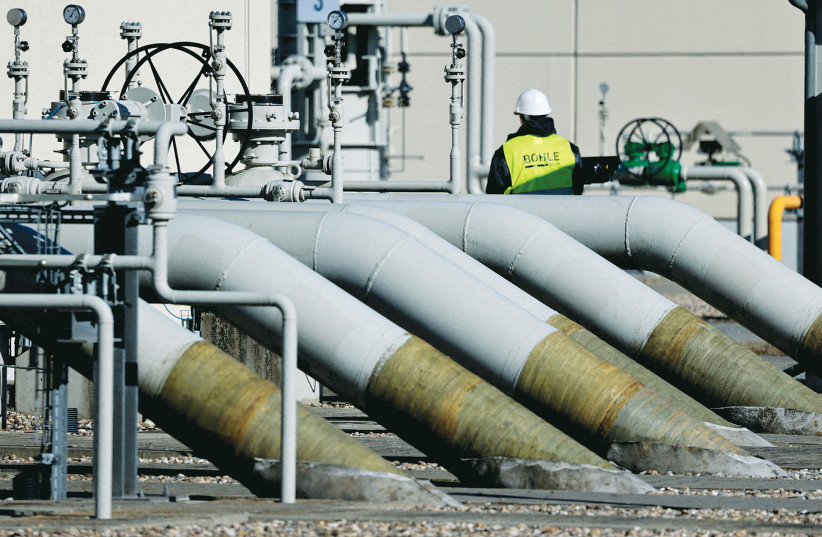As Israel is examining means to export additional volumes of natural gas into the global market, policymakers should take lessons from Russian gas exports.
After decades of a certain mindset, in 2022-2023, global gas markets experienced an unprecedented shift between pipeline and liquefied natural gas (LNG) trade.
Russian pipeline gas supplies to Europe, which were stable even during the Cold War, fell by half in 2022, from 170 to 80 billion cubic meters, and in 2023 are expected to fall by another 50% to about 40 bcm. Thus, in two years, Russia is likely to lose 130 bcm of gas exports. Using very modest estimates of the average gas price in this period ($10/MMBtu), this amounts to a loss of $50 billion in annual export revenues for Russia.
The steep drop in Russian pipeline exports to Europe happened despite the fact that pipeline gas is usually cheaper and guarantees greater security of supply for the buyer compared to LNG.
Russian LNG supplies to Europe increased
This major pivot is taking place, as Russian gas pipeline exports to Europe are in free fall (due to sanctions from both sides, destruction of Nord Stream pipelines and other reasons), and while Russian LNG supplies to Europe have, on the contrary, increased by 20% in 2022.

That happened mainly because of the flexibility and “quasi-anonymity” of liquefied natural gas, which is shipped and traded by various entities around the globe.
Had Russia strategized better and built more LNG export plants, it would have been able to both maintain certain markets in Europe and ship much more gas to other regions.
Israel now is in the midst of deciding whether to focus on pipeline infrastructure or to venture into the global LNG market via a dedicated floating LNG facility. As it does so, it needs to weigh the pros and cons of cheaper and easier-to-build pipelines, versus the more technically challenging and expensive, but fully flexible, LNG option. The latter would open Israeli gas access to more than 44 LNG-importing countries.
Pipelines create codependence between sellers and buyers. As the history of Russia and Europe relations show, such interdependence can create both alliances but also political tensions. In the latter case, pipeline infrastructure and pipeline gas are the first victims.
Ties between states can just as well be strengthened with LNG supplies, as they have been with pipeline gas, but without the downside risks of over-dependence on one market, supplies being cut, infrastructure being damaged or regulatory changes. For example, on June 19, 2023, the EU revised its target for its share of renewables in gross energy consumption by 2030 to 45% from 32%. No surprise, European buyers are becoming more reluctant to sign new long-term contracts for gas imports.
There are great benefits for Israel from its current exports of gas to Egypt and Jordan. It is also crucial to move ahead with new “low-hanging fruit” projects to Egypt, such as the Nitzana connection, the Ashdod-Ashkelon loop, and of course maintaining the EMG and FAJR routes.
However, for the next multi-billion dollar phase of Israeli gas export expansion, the country should take a lesson from the Russian example and perchance invest in an LNG facility. Gas from such a facility could be supplied to Europe, Asia, and even to Turkey and Egypt, and make Israel an “all-seasons” global gas player – regardless of the political “weather.”
Gina Cohen is a natural gas analyst, consultant, lecturer at university and at international conferences and author of two books on natural gas. Alexander Kislov is an expert in natural gas strategy and energy market research, with special focus on EastMed, Russia, Europe and China.
